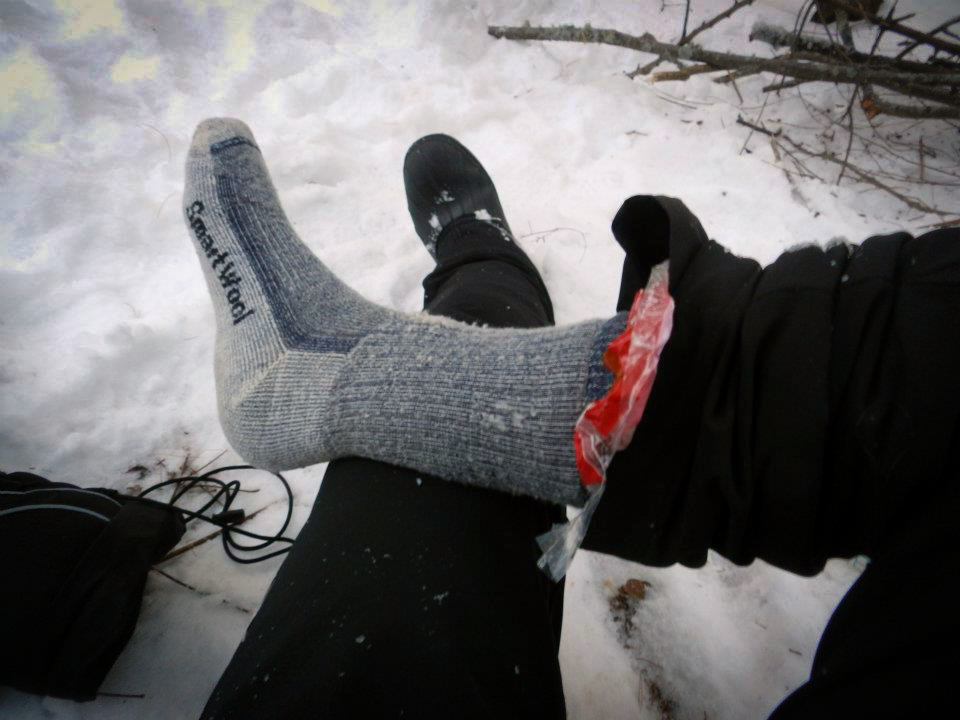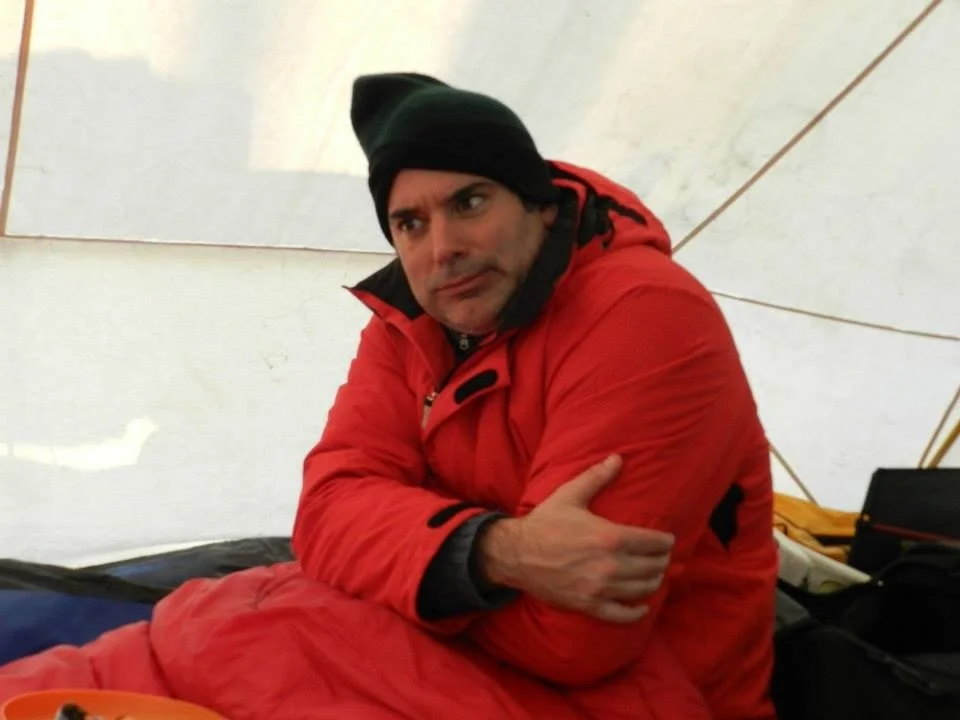10 Tips for Staying Warm Winter Camping
Warmth! We obsess about staying warm when we go winter camping. Or, maybe some of you do, like me. I see it as a healthy sign of respecting Mother Nature and the weather that she can throw at me.
I’ve winter camped at -27ºF. That’s cold. Having done a lot of winter camping and guiding over the years, I’ve discovered tried and true ways to stay warm and comfortable. I’m sharing them with you!
A Seek Outside nylon tipi tent. [ o ] Alex Horner
1. Dress for the weather and dress in layers. Start with baselayers (top and bottom) next to your body. Merino-wool blends are extremely warm. Next, add a fleece top and bottom. Finally, add insulated winter pants or ski pants along with an insulated jacket or anorak.
Mix and match all of these pieces, remembering that if you’re going for a hike or remaining moderately active, you don’t have to wear as many layers. Be sure that your middle and top layers are roomy. Too tight and warm air won’t circulate, making you cold. Wear a pair of thin, wool-blend gloves over insulated mittens. As the saying goes, dress for mile three (when you’ll be warmed up).
Hot tip: Carry a day pack for adding/removing layers then you don’t have to obsess about what to bring.
Pack ski goggles for cold, blustery days.
2. Eat high-calorie foods. If you are winter camping, you’re likely moving around which helps with warmth. Eating high-calorie foods, especially right before bed helps your internal “stove” keep you warm.
3. Toss a hot water bottle into your sleeping bag. Bring a wide-mouth water bottle (or two!), such as Nalgene brand, and fill it with boiling water before bedtime. Screw the lid on, double-check for leaks, and toss it into your bag right before bed. It stays warm for hours and boosts morale.
4. Wear nitrile medical gloves. Say what? Yes, medical gloves put on first before another pair of gloves or mittens do wonders on bitterly cold or cold and damp days. Acting like a mini greenhouse for your hands, they trap in warmth. They also keep your hands mildly warm when you remove your mittens and gloves to work with small things like zippers or food wrappers.
5. Add a sleeping bag liner. Silk, fleece, or synthetic liners can add 5º-10º of warmth to your sleep system. They also help trap moisture and dirt, extending the life of your sleeping bag.
6. Cover your head and face. Most people know to wear a knit or fleece hat to bed, but then they get into trouble by burying their head inside their sleeping bag. This traps in moisture from your breath affecting the loft of the bag. In turn, it doesn’t hold heat as well, making you cold. Instead, wear a buff or face mask and keep at least your nose and mouth out of the bag.
Anna is warm and cozy in a mound of bags on a -22º morning in the Boundary Waters.
7. Add bread bags to your feet. It sounds ridiculous but like the medical gloves mentioned above, they create a greenhouse effect. If you’re prone to cold feet, put some bread or large zip-lock bags over your bare feet. Add wool-blend socks and voilà, warm feet! True, it feels a bit odd at first but you’ll eventually drift off to sleep. Better than no sleep, eh?!
This also works if your winter boots submerge into wet snow or slush and your feet get wet and cold. Swap out the wet socks with dry socks and then the plastic bags. Warm feet with a waterproof barrier equals happy feet.
Bread bag peeking out from underneath wool blend socks.
8. If you wake up cold, eat. Stick a high-calorie granola bar nearby and eat it if you wake up cool, regardless of hunger. It will kick start some warmth. Then, do some mini crunches in your bag until you get warm again.
Eat high calorie snacks before bed. Impress your crew with a yummy charcuterie board.
9. Use a sleeping bag rated 10º-20º warmer than the expected temps. Everyone has their own internal thermostat, however getting a lower degree bag ensures a more comfortable sleep. Dry or damp air along with wind all play a part in the “real feel” of temperatures. If you get too warm (unlikely), just unzip the bag and hang a leg out.
10. Cozy up to a buddy. Seriously…two (or more) bodies are better than one in a shelter. Sleeping in the same tent relatively close together generates warmth. Spooning is optional. Not your thing? Bring your sheepdog.
There you have it! 10 easy ways to stay warm winter camping. Have any good tips to add? Tell us in the comments.
Cuddle for warmth with your cold buddy.
Learn more about hot tenting basics.
Advertising
As an Amazon Associate, I earn a small commission from qualifying purchases at no cost to you. I recommend products I’ve used myself and found to be reliable.







